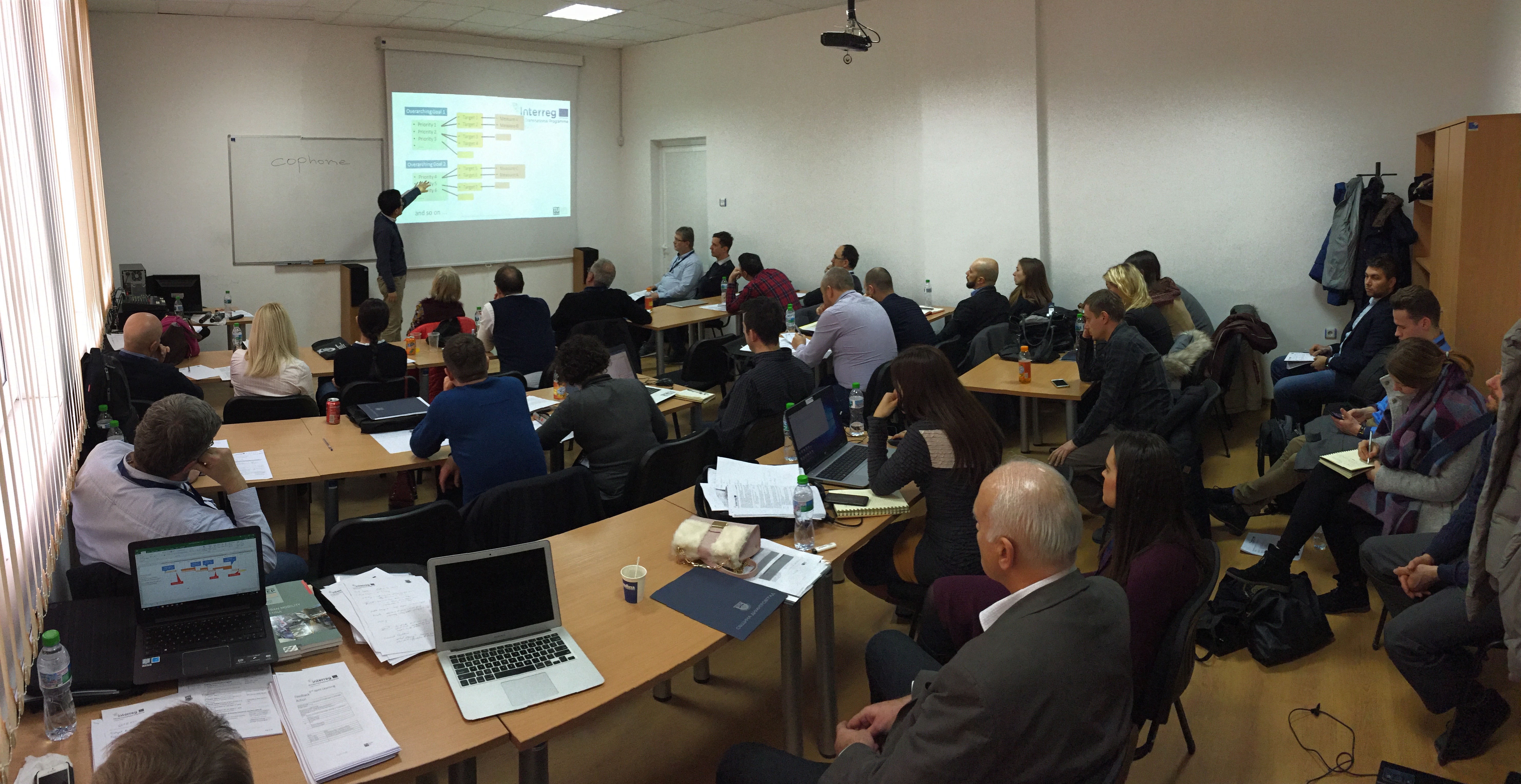CHESTNUT - Joint Learning Action brought partners one step closer to Sustainable Urban Mobility Plans
22-01-2018

DIMITROVGRAD, Bulgaria - During 2-day-long meeting CHESTNUT partners presented the results of the first thematic work package (WP3). This work package was led by Pannon Business Network, who informed partners about the requiring tasks, and helped them with the process. The work accomplished within the WP3 will be the base for a realistic transnational strategy, indicating criteria for drafting the Sustainable Urban Mobility Plans-SUMPs at Functional Urban Area (FUA) level which is an innovative practice in the Danube Region and probably in Europe as a whole too.
In the beginning of WP3 a common transnational template was prepared by PBN - with a great scientific support of the Vienna University of Technology. CHESTNUT partners had to collect data about their own FUA for the assigned, mainly mobility related, indicators. PBN coordinated the action, and unified the data that will serve as a base for mobility scenarios development, and later for the creation of the Transnational Strategy.
PBN as WP Leader, with the valuable scientific remarks of VUT, prepared a Transnational Report. This document is pointing out every partner’s FUA data collection results with graphics and short explanations and the report is making comparison between the partners’ results. This document is a good base for partners’ would-be SUMP, as well as the results can be presented in (local) stakeholder events.
Mobility scenarios as a tool ofr urban mobility planning
Based on the collected data, each FUA had to elaborate their own test mobility scenarios (3 to 5) according to a guidelines prepared by VUT and PBN. The role of test scenario in the context of sustainable urban mobility planning is to encourage wide range of the stakeholders to discuss the future mobility of the area concerned e.g. FUA. Scenario is a tool to help authorities, transport service providers, citizens, experts, companies and schools in the area of concern, residents, and other stakeholders to openly discuss the future of mobility and relevant policy in the region. It also helps them to feel the “ownership” of SUMP as the common future vision of the FUA. In the scenario analysis part every partner had to answer the given questions, found in the guideline, and provide logical foundation for their answer. Partners had to set their planning horizon on either 2025 or 2030 based on their FUA’s planning time-frame.
Every partner had to organize at least one seminar with local stakeholders where partners had to present their mobility scenarios, and set up their overarching goals. These overarching goals guide the further steps of SUMP-drafting envisaged in WP4. As the guideline suggests, stakeholders have to agree on a common vision, which is a long-term goal for mobility and transport development in partners’ FUA, which will guide the further planning and SUMP-drafting process. Partners were recommended to set up four to six overarching goals.
PBN as WP Leader was continuously collecting all partners mobility scenarios and overarching goals and based on their inputs the Transnational Strategy is being prepared by PBN. This Transnational Strategy on the one hand intends to summarize and compare project partners‘ mobiity scenarios. On the other hand, the Strategy points out the overarching goals of the partners’ Functional Urban Areas (FUA) regarding mobility in the next decades.
Sustainable Urban Mobiliyt Plans to be finished until November 2018
In the following thematic work package (WP4 led by VUT) knowledge gained in WP3 will be elaborated in details. Knowledge supplied by WP3 above will be base to initiate the process of elaboration of the SUMPs at Functional Urban Area level.
CHESTNUT partners are expected to meet again on May 8-10 in Dubrovnik (TBC), after that on 27-28 June in Banja Luka, and finally on the October 5 in Budapest where the final touches regarding the SUMPs shold be made. SUMPS are expected to be finalized by the end of the year by all partner FUAs, and publicly presented probably during November 2018.
Want to know more about the project?
